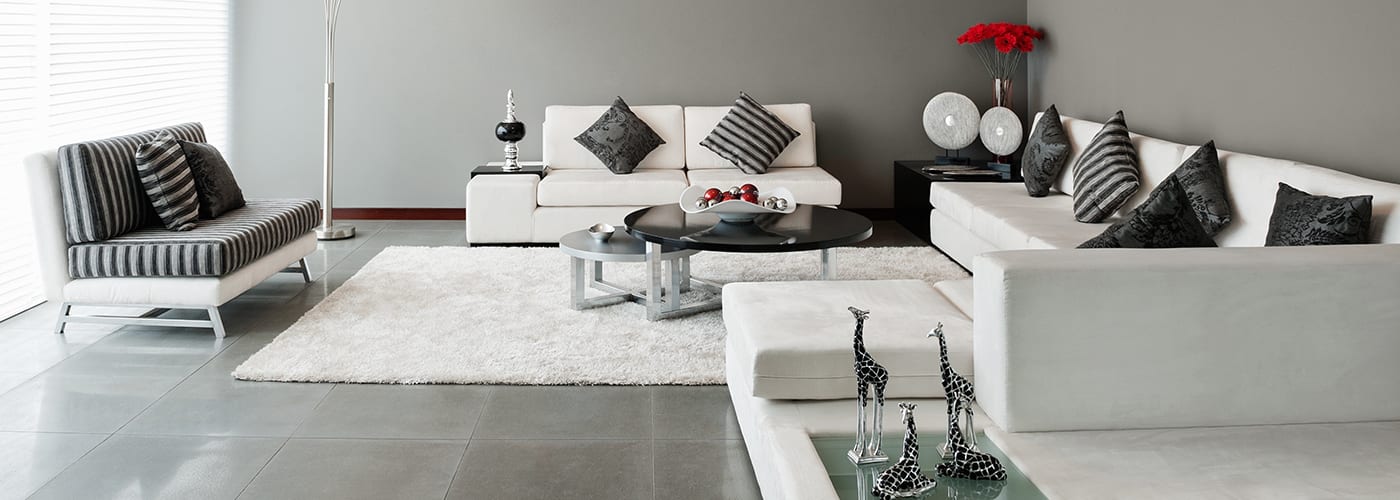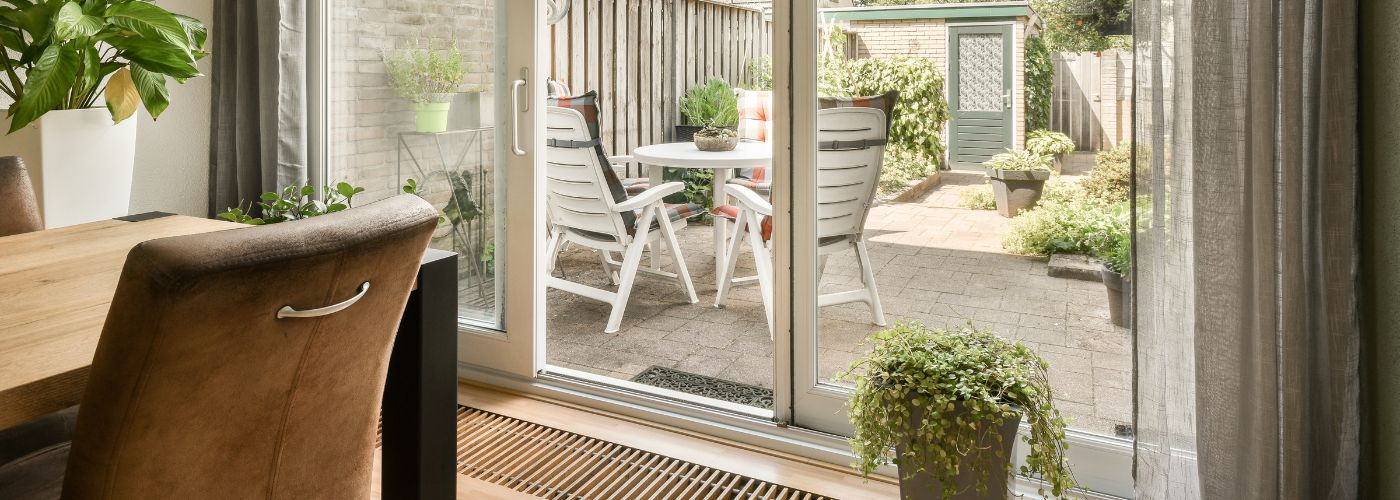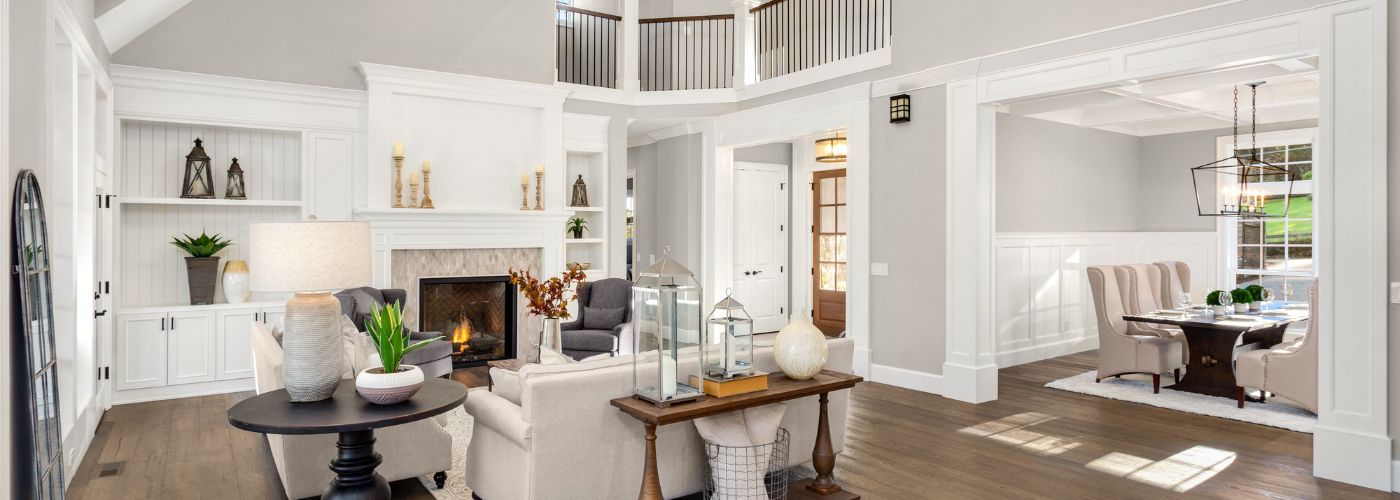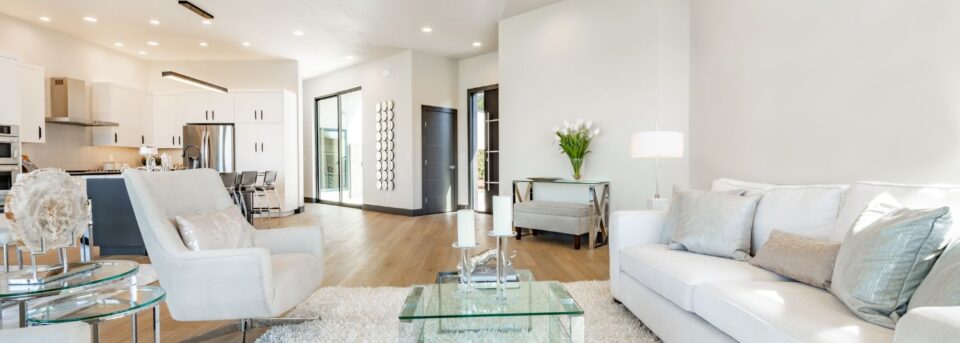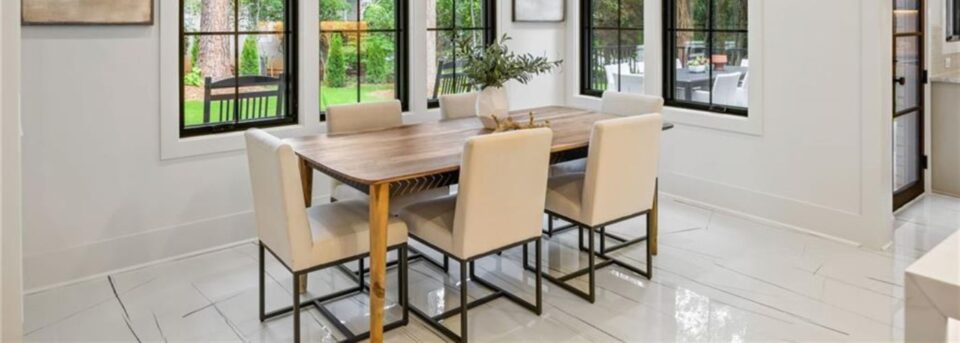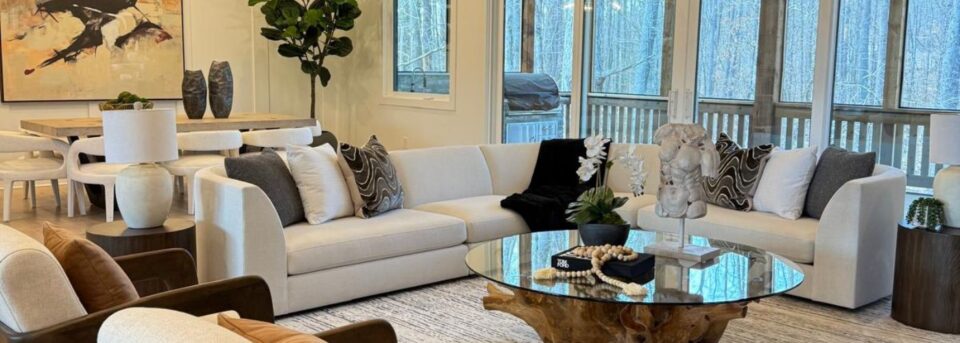How to Stage Large Spaces

Have you ever walked into a large room and felt overwhelmed by the empty space? Staging large areas can transform them from daunting to delightful, making them inviting and functional. In this article, we’ll explore practical tips and strategies on how to stage large spaces.
Tips On How to Stage Large Spaces
When staging large spaces, it’s essential to create a sense of flow and purpose. Start by defining different zones within the area. Use rugs or furniture arrangement to delineate spaces for lounging, dining, or working.
This not only helps in showcasing functionality but also adds warmth, making the vast area feel more inviting.
Next, don’t shy away from bold decor choices. Large walls can be daunting, but they offer an excellent opportunity for statement art pieces or oversized mirrors that reflect light and create a sense of depth.
Lastly, remember that lighting plays a crucial role—layered lighting with floor lamps, table lamps, and overhead fixtures can transform the atmosphere, making it feel cozy and well-balanced.
Declutter To Maintain a Spacious Atmosphere
When staging large spaces, the key is to create a sense of flow while avoiding clutter. Start by decluttering to maintain a spacious atmosphere; this means removing unnecessary furniture and personal items that can make the area feel cramped.
Consider using multifunctional furniture, like a stylish ottoman that doubles as storage, to keep things tidy while adding character to the room.
Expedite the decluttering process by sorting items into categories: keep, donate, and discard. This will help you make quick decisions about what stays and what goes. Once you’ve streamlined the space, focus on furniture staging to encourage movement and conversation.
Position larger pieces against the walls to open up pathways and create a more inviting environment. Use area rugs to define different zones within the space, such as a cozy reading nook or a dining area, which can enhance the overall functionality of the room.
Choose Sliding Doors For Better Flow
When staging large spaces, the key is to create a sense of balance and warmth. One effective way to achieve this is by choosing sliding doors for better flow. Unlike traditional doors, sliding doors save space and enhance the open feel of a room. They allow natural light to flood in, making the area feel even larger and more inviting.
Consider sliding door designs like barn doors, which can add a rustic charm while maintaining functionality. These doors can serve as a striking focal point, complementing various interior styles from farmhouse to modern chic.
Alternatively, sleek glass sliding doors can create a seamless transition between indoor and outdoor spaces, perfect for patios or balconies.
Install Hanging Shelving For Extra Storage
Learning how to stage large spaces can be a game-changer in how a room feels and functions. One effective tip is to install hanging shelving for extra storage. This not only draws the eye upward, making the ceiling feel higher, but also creates functional areas without overcrowding the floor.
Consider using these shelves to display art, plants, or books, which can add personality and warmth to the space.
You can also use other floating furniture like console tables or wall-mounted desks, which can provide additional surfaces without taking up valuable floor space. These pieces can serve multiple purposes, such as a place to work or display decorative items, while maintaining an open and airy feel in the room.
Plan For An Open Design Concept
When planning an open design for large spaces, consider the flow of movement. Think about how people will navigate through the area. Create clear pathways that guide visitors naturally, using furniture arrangements or decorative elements to subtly direct traffic. This helps maintain a sense of openness while ensuring comfort.
Don’t overlook the power of light and greenery. Large windows can flood the space with natural light, creating a warm atmosphere.
Adding plants not only improves air quality but also brings life to your design, making it feel more welcoming. By blending these elements thoughtfully, you can create a harmonious environment that captivates and engages everyone who steps inside.
Incorporate Mirrors to Enhance Light and Depth
Staging large spaces can feel daunting, but with the right techniques, you can transform them into inviting areas. One effective method is to incorporate mirrors to enhance light and depth. Placing a large mirror opposite a window can reflect natural light, making the room feel brighter and more spacious.
This trick not only adds depth but also creates an illusion of extra space, drawing the eye across the room.
Some great colors that work with larger spaces are soft neutrals, such as beige, taupe, or light gray, which provide a calming backdrop without overwhelming the space. These colors can help create a cohesive look while allowing for flexibility in decorating.
To add interest, consider using bolder accent colors through furniture, artwork, or decorative interior design. Overall, keep all of these tips in mind when learning how to stage large spaces.

